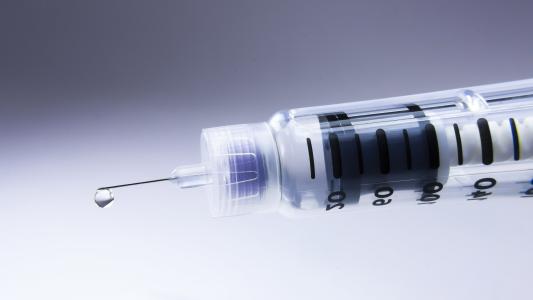Blood is essential to modern healthcare — it helps wounds heal, regulates body temperature, and transports oxygen, immune system cells, and other vital substances throughout the body.
It’s also in incredibly short supply.
Every two seconds, someone in the U.S. needs a blood transfusion, but only about 3% of people eligible to donate blood in a given year actually make their way to a blood drive.
Add in the fact that the pandemic has forced the cancellation of many collection drives, and you get a nation with a critically low supply of blood.
If researchers can figure out a way to create artificial blood in the lab, this reliance on blood donations could end — and several groups are homing in on that holy grail of healthcare.
ISO: Artificial Blood
The quest for artificial blood isn’t new — researchers have been trying to concoct a blood substitute for decades, with little success.
Part of the reason for this interest is the fact that donated blood has a number of limitations, beyond the necessary reliance on willing donors.
For one, whole blood has a shelf life of just 42 days and must be refrigerated — this severely limits its use (and transport) in places without reliable electricity.
Blood types also limit the utility of donated blood — a person with Type O blood can only receive transfusions of Type O, for example — and donated blood must be screened for potentially contagious viruses and bacteria.
Artificial blood could, theoretically, be designed to overcome these limitations.
Growing Red Blood Cells
One of the biggest hurdles to creating artificial blood has been finding a way to mimic blood’s oxygen-carrying abilities. This process is carried out by red blood cells, which store oxygen in hemoglobin — a molecule that’s actually toxic to the body when not in its protective cell shell.
One way to copy this ability is to simply manufacture red blood cells in the lab.
The red blood cells could literally be grown from a recipient’s own body.
To that end, Cambridge University researchers grew red blood cells from stem cells. They plan to inject the cells into patients in an upcoming trial to test their survival compared to donated red blood cells.
If the stem cell-derived red blood cells are robust, they could help address blood shortages while also making it possible to create artificial blood for people with rare blood types who need regular transfusions — the cells could literally be grown from a recipient’s own body.
Packing Hemoglobin
Biotech company KaloCyte has taken a different approach to this same problem, developing a synthetic red blood cell that contains purified human hemoglobin.
Their product, Erythromer, can be stored at room temperature and has a longer shelf life than donated blood, meaning hospitals could keep supplies of the artificial blood component on hand for when they don’t have enough donor blood to meet demand.
It could also be useful in places where refrigeration isn’t always possible, such as war zones or developing nations.
KaloCyte hasn’t reached the clinical trial stage with its synthetic blood cells yet, but Erythromer is being tested in rabbits, and the company recently secured a $373,000 grant from the National Institutes of Health to continue the product’s development.
With Our Creations Combined…
While these researchers focus on red blood cells, others have set their sights on recreating the platelets that give blood its clotting abilities.
Biotech company Haima Therapeutics is in the preclinical stage of testing its fully synthetic platelets, while researchers at Japan’s Kyoto University are already testing platelets grown from stem cells on humans.
Ultimately, it could be a combination of these efforts that ends up bringing artificial blood to fruition, finally making good on an idea that’s been percolating in scientists’ minds for decades.
We’d love to hear from you! If you have a comment about this article or if you have a tip for a future Freethink story, please email us at [email protected].






